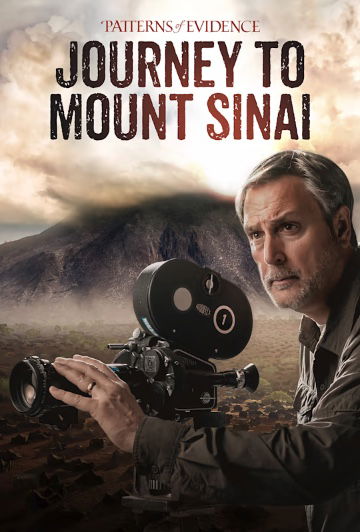“Searching for the Real Mt. Sinai”

| None | Light | Moderate | Heavy | |
|---|---|---|---|---|
| Language | ||||
| Violence | ||||
| Sex | ||||
| Nudity |
What You Need To Know:
Part I of JOURNEY TO MT. SINAI is an informative, faith-filled movie detailing the major issues involved in deciding which of the six mountains best fits the biblical narrative of the last four books of Moses. As such, the movie gives viewers a closer look at the Exodus story, especially the all-important incident of the burning bush and the giving of the Ten Commandments to Moses.
Content:
Very strong Christian, biblical worldview examines three of sex candidates for the real location of Mt. Sinai in the Middle East, the location where Moses saw the burning bush, where God gave Moses the Ten Commandments and where Moses stopped the Jews from worshiping the golden calf
No foul language
No violence
No sex
No nudity
No alcohol use
No smoking or drugs; and,
Nothing objectionable.
More Detail:
In the beginning of the movie, Narrator Tim Mahoney identifies the problem of determining the true location of Mt. Sinai. So far, he notes, modern archeology says it has found little to no evidence of a large number of Hebrews leaving Egypt in the 15th or 13th Century BC. However, that’s to be expected since the biblical text says that the followers of Moses wandered the desert for 40 years. Nomadic wanderers don’t stick around for long in any one place. The Bible seems to say, though, that 603,000 men, or about two million people total, followed Moses out of Egypt. Some archeologists, however, believe that the numbers of people listed in Exodus should be re-translated or listed as only about 30,000 people in all. Mahoney believes in the larger figure.
Mahoney says there are six mountains in the Middle East that are candidates for being the true Mt. Sinai. Based on the biblical text, he establishes six categories of evidence for identifying the real Mt. Sinai. For example, there’s the journey to the mountain, which entailed stops at seven campsites; the distance of the mountain from the land of Midian where Moses was staying when he traveled to the mountain and saw the burning bush; the direction Moses went with his flock when he traveled to the mountain and saw the burning bush; the physical attributes of the mountain and its surrounding area, which should have a large plain nearby, plenty of water, a stream coming down the mountain, and should contain the mountain cave where, centuries later, the Prophet Elijah fled; and, artifacts associated with the mountain, such as an altar, 12 pillars, inscriptions and evidence of a large encampment.
Mahoney notes that the Emperor Constantine’s mother, Queen Helena, visited the Holy Land from AD 326-28. On her trip, she visited a mountain in the Sinai Peninsula and declared it to be the true Mt. Sinai. However, he finds that this mountain doesn’t have enough water, shows no evidence of a stream, doesn’t have any inscriptions or an altar, and the alleged Elijah cave at the mountain is actually a small hovel, not a cave.
Mahoney then examines the evidence for two other potential Mt. Sinai mountain sites and finds the evidence there lacking as well. Throughout the movie, Mahoney interviews numerous scholars about the three mountains.
Part I of JOURNEY TO MT. SINAI is an informative, faith-filled movie detailing the major issues involved in deciding which of six mountains best fits the biblical narrative of the last four books of Moses. As such, the movie gives viewers a closer look at the Exodus story, especially the all-important incident of the burning bush and the giving of the Ten Commandments to Moses. Here, it’s interesting to note that the Founding Fathers of the United States venerated the Exodus as an important symbol of Liberty for America and its people. For example, Benjamin Franklin wanted it to be part of the national seal.


 - Content:
- Content: 

